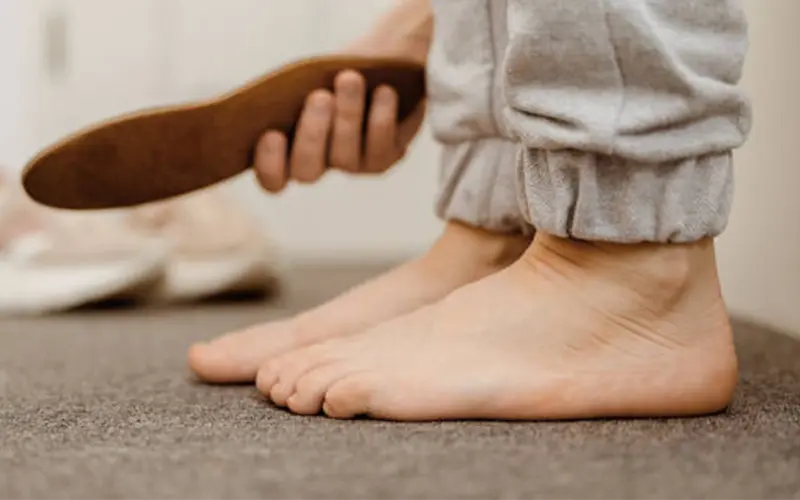Flat Feet

Flat Feet Q&A
Most babies are naturally born with no arches. Over time, as the feet develop, they form any one of three types of arches: low or no arch, a medium arch, or a high arch. If you were recently diagnosed with flat feet after suffering from years of symptoms, you may wonder why your arches never developed and what you can do to find some relief.
What Are Flat Feet?
Otherwise known as a fallen arch, flat feet occur because the tendons in the feet are damaged or not adequate enough to form an arch. When an individual with this condition stands on solid, hard ground, they will have little or no visible arch. This means that their entire foot will sit flat on the ground. If you aren’t sure whether or not you have flat feet, this simple test can help:
- Step in some water or cover the bottoms of your feet with chalk or washable paint.
- Step on some concrete or pavement, making sure your entire feet are on the surface.
- Step away and look at the imprint left behind.
If your entire feet make an impression with little to no curve to your feet, which would be the arches, you might have flat feet.
Other symptoms include pain in the feet, legs, and hips. The pain can occur at any time but often flares up after the individual stands or walks for long periods or after exercising.
Why Do I Have Flat Feet?
Several reasons exist for why a person will develop flat feet, either in childhood or later in life. For example, most children will develop arches around two to three years of age. Some children have a genetic abnormality that causes weakened tendons or the tendons in their feet don’t form properly. Here are a few other causes of flat feet:
- Rheumatoid arthritis. RA, or rheumatoid arthritis, impacts the joints throughout your body, including the joints in your feet. Extensive RA-related joint damage can cause flat feet.
- Ligament or bone damage. A fall, car accident, or any other injury or illness that impacts the bones and ligaments in the feet can also cause flat feet.
- Posterior tibial tendon swelling or damage. The posterior tibial tendon, or PTT, runs the length of your leg and through your foot. Swelling or damage to the PTT can result in fallen arches.
Several conditions increase the risk of a person developing flat feet, including pregnancy, obesity, and diabetes.
Treatment:
Several treatment options are available, and the type of treatment your doctor recommends is based upon the severity of your fallen arches and any symptoms you experience. For example, if the pain is minor and your feet do not greatly impact your quality of life, the doctor may recommend orthotic arch supports. Arch supports are available for purchase in store and online.
However, if your foot pain is more severe or your pain radiates through your legs and hips as well, your doctor may recommend custom orthotics, which can accommodate your foot’s unique shape.
Certain exercises, such as toe raises, arch or leg raises, and feet rubbing over tennis balls can help you find relief. If condition is from tendon, bone, or ligament damage, your doctor may recommend surgery. However, surgery is not beneficial or recommendable if cause is from a genetic condition or other chronic ailments that impact joints, bones, or tendons.
Fallen arches is a common condition, but your Upperline Health doctor can help you find relief.

Contact one of our Upperline Health convenient clinics to get your Flat Feet treatment started.
